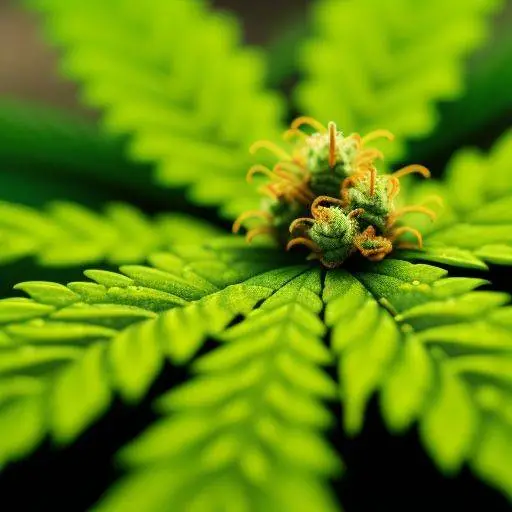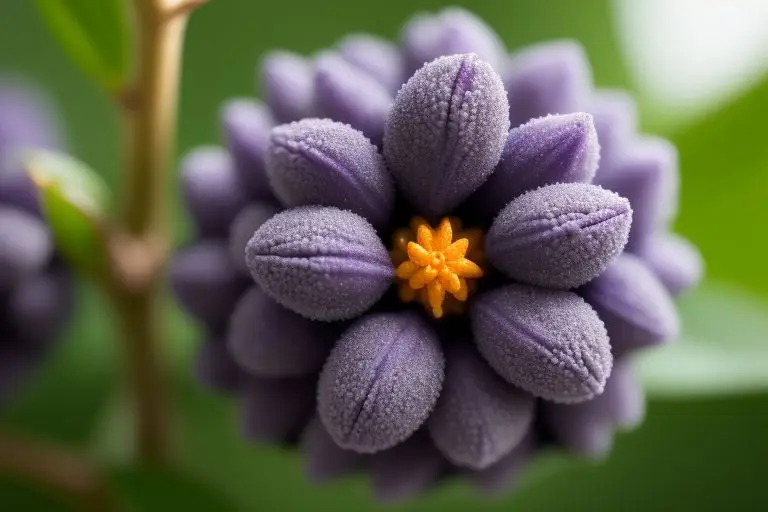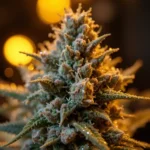Forbidden Fruit Strain: A Sweet, Relaxing Hybrid Perfect for Stress Relief
Introduction
When it comes to cannabis, certain strains stand out for their unique flavor profiles and relaxing effects, and Forbidden Fruit is certainly one of them. Known for its sweet, fruity flavor and calming properties, Forbidden Fruit is a hybrid strain that has garnered attention from both recreational and medical cannabis users alike. Forbidden Fruit is the perfect choice if you’re looking for a strain that delivers a balanced high with a dessert-like taste.
With a THC content ranging between 18%–26%, Forbidden Fruit offers moderate potency that makes it suitable for a wide range of users. It’s not too overwhelming, yet it delivers euphoric effects that can help with stress, pain relief, and mood enhancement. In this blog, we will delve into the genetics, effects, flavors, and medicinal benefits of Forbidden Fruit and provide tips for growing this sweet and relaxing hybrid.
Origins and Genetics
Forbidden Fruit is the product of crossing two popular strains: Cherry Pie and Tangie. Each of these parent strains contributes distinct characteristics to Forbidden Fruit, resulting in a strain that combines sweet, fruity flavors with relaxing and uplifting effects.
Parent Strains
- Cherry Pie
- Cherry Pie is a hybrid that blends the genetics of Granddaddy Purple and Durban Poison. It’s known for its sweet cherry flavor and balanced effects that offer mental clarity and physical relaxation. The cherry-like aroma and relaxing effects are passed down to Forbidden Fruit, making it an excellent strain for recreational and medicinal use.
- Tangie
- Tangie is a Sativa-dominant hybrid known for its citrus aroma and uplifting effects. This strain is a cross of California Orange and Skunk and is renowned for its ability to boost creativity and mood. The tangy, citrus flavors from Tangie add to Forbidden Fruit’s fruity profile, enhancing the overall flavor experience.
Key Traits of Forbidden Fruit
- Type: Hybrid (60% Indica / 40% Sativa)
- THC Content: Typically ranges from 18%–26%, offering a moderate potency.
- CBD Levels: Low, generally under 1%, making it ideal for recreational use.
- Terpene Profile:
- Limonene: Contributes a citrusy aroma and helps with mood-lifting effects.
- Myrcene: Known for its earthy and musky notes, myrcene promotes relaxation and calm.
- Caryophyllene: Adds a spicy note to the flavor and offers anti-inflammatory properties.
Effects and Benefits
Forbidden Fruit offers a balanced high that combines relaxation with a mild uplift. It’s a great strain for people looking to unwind after a busy day while maintaining focus and clarity. The effects are more soothing than sedative, making it ideal for various users.
Recreational Effects
- Relaxing and Calming
- Forbidden Fruit provides a calming body high that helps users unwind and de-stress. It’s perfect for evening use or when you need to relax without becoming too couch-locked.
- Euphoric and Happy
- This strain delivers a gentle wave of euphoria that boosts mood without overwhelming the user. It can help users feel more happy and social, making it great for light social activities or creative hobbies.
- Mental Clarity
- While the strain relaxes, it doesn’t impair mental function, allowing for clear-headed relaxation. It’s a good option for creative work or engaging in social conversations while staying calm.
- Mild Sedation
- Forbidden Fruit can induce gentle sedation at higher doses, making it a good strain for promoting restful sleep or unwinding before bedtime.
Medical Benefits
Forbidden Fruit is commonly used for its medicinal properties, particularly stress relief and pain management. Its effects are well-suited for treating a variety of conditions without causing overwhelming sedation.
- Stress and Anxiety Relief
- With its calming and euphoric effects, Forbidden Fruit effectively alleviates stress and anxiety, making it a great option for users looking to relax mentally and emotionally.
- Pain Relief
- Forbidden Fruit’s relaxing effects benefit users experiencing chronic pain, muscle soreness, or joint discomfort. Its ability to ease tension in the body makes it a great strain for pain management.
- Mood Enhancement
- The mild euphoric effects of Forbidden Fruit can help improve mood and provide relief for individuals struggling with depression or low energy.
- Appetite Stimulation
- Like many cannabis strains, Forbidden Fruit can stimulate appetite, making it useful for individuals who have nausea or loss of appetite due to medical treatments or other conditions.
Potential Side Effects
Forbidden Fruit is generally well-tolerated, but as with any cannabis strain, it’s important to be aware of potential side effects:
- Dry Mouth (cottonmouth)
- Dry Eyes
- Dizziness (especially with higher doses)
- Paranoia (rare, but can occur in sensitive users)
Flavor and Aroma
Forbidden Fruit is known for its distinctive flavor profile, which combines sweet, fruity, and earthy notes. The flavors of cherry, citrus, and tropical fruit make it a flavorful strain that’s pleasant to smoke or vape.
Flavor Notes
- Sweet, Fruity, and Cherry
- The dominant flavors of Forbidden Fruit are sweet and fruity, with prominent cherry and citrus notes. These come from the Cherry Pie and Tangie parent strains, creating a dessert-like flavor profile.
- Earthy and Musky
- Alongside the sweet fruitiness, there’s an earthy, musky undertone, balancing the sweetness and adding depth to the overall flavor.
- Tropical and Citrus
- The strain’s Tangie genetics contribute a citrusy kick to the sweet fruit flavors, giving it a tropical, zesty finish that makes it even more enjoyable.
Aroma
- Sweet, Fruity, and Citrusy
- The aroma of Forbidden Fruit is sweet and fruity, with strong notes of cherry, citrus, and a hint of tropical fruit. The earthy undertones make it a fragrant and inviting strain.
Consumption Methods
There are various ways to consume Forbidden Fruit, each offering a unique experience. Whether you prefer smoking, vaping, or using concentrates, Forbidden Fruit can be enjoyed in several forms.
- Smoking
- Smoking is the quickest way to experience the effects of Forbidden Fruit. Whether in a joint, blunt, or pipe, smoking provides immediate results, delivering both flavor and relaxation quickly.
- Vaping
- Vaping is an excellent method for preserving the strain’s terpene profile. It delivers smoother, more flavorful vapor and is a healthier alternative to smoking. This method also allows users to experience the full range of the strain’s flavors.
- Edibles
- If you prefer edibles, Forbidden Fruit can be used to create cannabis-infused treats. The strain’s sweet, fruity flavor makes it an excellent addition to gummies, cookies, or brownies, and the effects of edibles tend to last longer than smoking.
- Concentrates
- For users who prefer a more potent experience, concentrates like wax or shatter made from Forbidden Fruit provide a quicker, stronger high. This is ideal for experienced users seeking a more intense experience.
Growing Forbidden Fruit
Forbidden Fruit is relatively easy to grow, making it an excellent choice for beginner and experienced cultivators. It thrives in warm, sunny climates and can be grown indoors or outdoors.
Attribute Details
Difficulty Moderate
Flowering Time 8–9 weeks
Yield Medium to high
Preferred Climate: Warm, sunny conditions
Bud Appearance: Dense, resin-coated buds with purple hues and orange pistils.
Pro Tips for Growing Forbidden Fruit
- Temperature
- Keep the temperature between 70–80°F to ensure optimal growth.
- Humidity
- Maintain moderate humidity (50–60%) during flowering to avoid mold and mildew.
- Pruning
- Prune regularly to allow light to reach the lower branches and encourage healthy bud development.
- Nutrient Management
- Use organic fertilizers to promote bud production and provide phosphorus-rich nutrients during the flowering stage.
Comparison Table: Forbidden Fruit vs. Similar Hybrid Strains
Feature Forbidden Fruit Cherry Pie Tangie
THC Content 18–26% 18–24% 19–25%
Primary Effects Relaxing, Euphoric Euphoric, Relaxing Uplifting, Creative
Flavor Profile Sweet, Fruity, Earthy Sweet, Cherry, Berry Citrusy, Tropical, Sweet
FAQs About Forbidden Fruit
Q: What is the best time to use Forbidden Fruit?
A: Forbidden Fruit is perfect for evening use or when you need to relax after a long day. It can also be enjoyed socially in small doses for a mild euphoria.
Q: Does Forbidden Fruit help with anxiety or stress?
A: Yes, Forbidden Fruit’s relaxing effects make it effective for relieving stress and anxiety.
Q: Is Forbidden Fruit good for pain relief?
A: Yes, its muscle-relaxing and calming effects make it useful for chronic pain, joint discomfort, and muscle tension.
Conclusion
Forbidden Fruit is a sweet, relaxing hybrid strain that perfectly balances fruity flavor and euphoric effects. Whether you’re looking to unwind, manage pain, or enhance your mood, Forbidden Fruit combines relaxation and happiness. Its flavor profile and moderate potency make it a popular choice among cannabis users, and its medicinal benefits make it a versatile option for those seeking relief.



